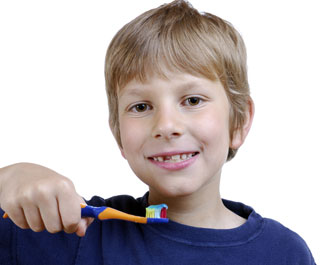 Has your toothbrush seen better days? No matter what type of toothbrush you use - electric or manual - when the bristles become frayed and worn, it is no longer effective for keeping your teeth and gums clean and healthy. The American Dental Association recommends you change your toothbrush every three months, and so do we! Also keep in mind that you should replace your toothbrush after an illness to avoid re-infection.
Has your toothbrush seen better days? No matter what type of toothbrush you use - electric or manual - when the bristles become frayed and worn, it is no longer effective for keeping your teeth and gums clean and healthy. The American Dental Association recommends you change your toothbrush every three months, and so do we! Also keep in mind that you should replace your toothbrush after an illness to avoid re-infection.
Choosing The Right Toothbrush
So which kind of toothbrush is right for you? Whether manual or electric, choose a toothbrush that is appropriate for your age and oral health needs.
Size: The head of the toothbrush should allow you easy access to all your teeth, especially those hard-to-reach molars. A toothbrush that is too large will be cumbersome to maneuver in a smaller mouth, while a toothbrush that is too small won't be as effective in reaching all the surface areas of your teeth.
Bristle Type: A soft-bristle toothbrush is your best bet to achieve a comfortable, safe, and effective teeth cleaning. Medium and hard-bristled brushes can damage your enamel and gums, especially if you tend to be an aggressive brusher.
Expert Recommendation: Make sure the toothbrush you choose has undergone rigorous safety and effectiveness testing. Look for the American Dental Association's (ADA) seal of approval or consult our team for recommendations on the best type of toothbrush to meet your needs, especially if you are wearing braces.
Technique: Finding the right toothbrush is the first step in great oral health. The second is ensuring that you're using the right brushing technique. Placing the toothbrush closer to the gum line and brushing with gentle circular motions for two minutes is important to achieve the best results.
Do you have questions about choosing the right toothbrush for your smile? If so, contact our office or ask us at your next appointment.
